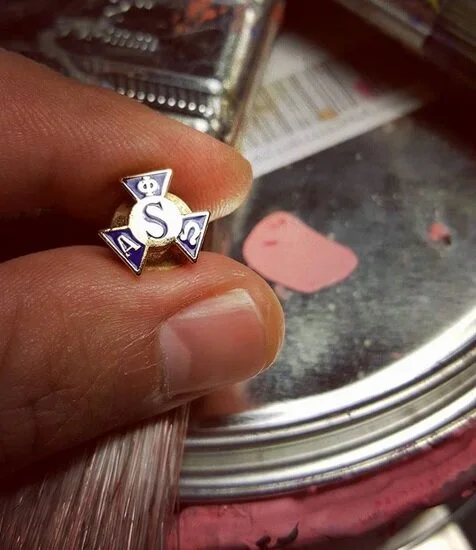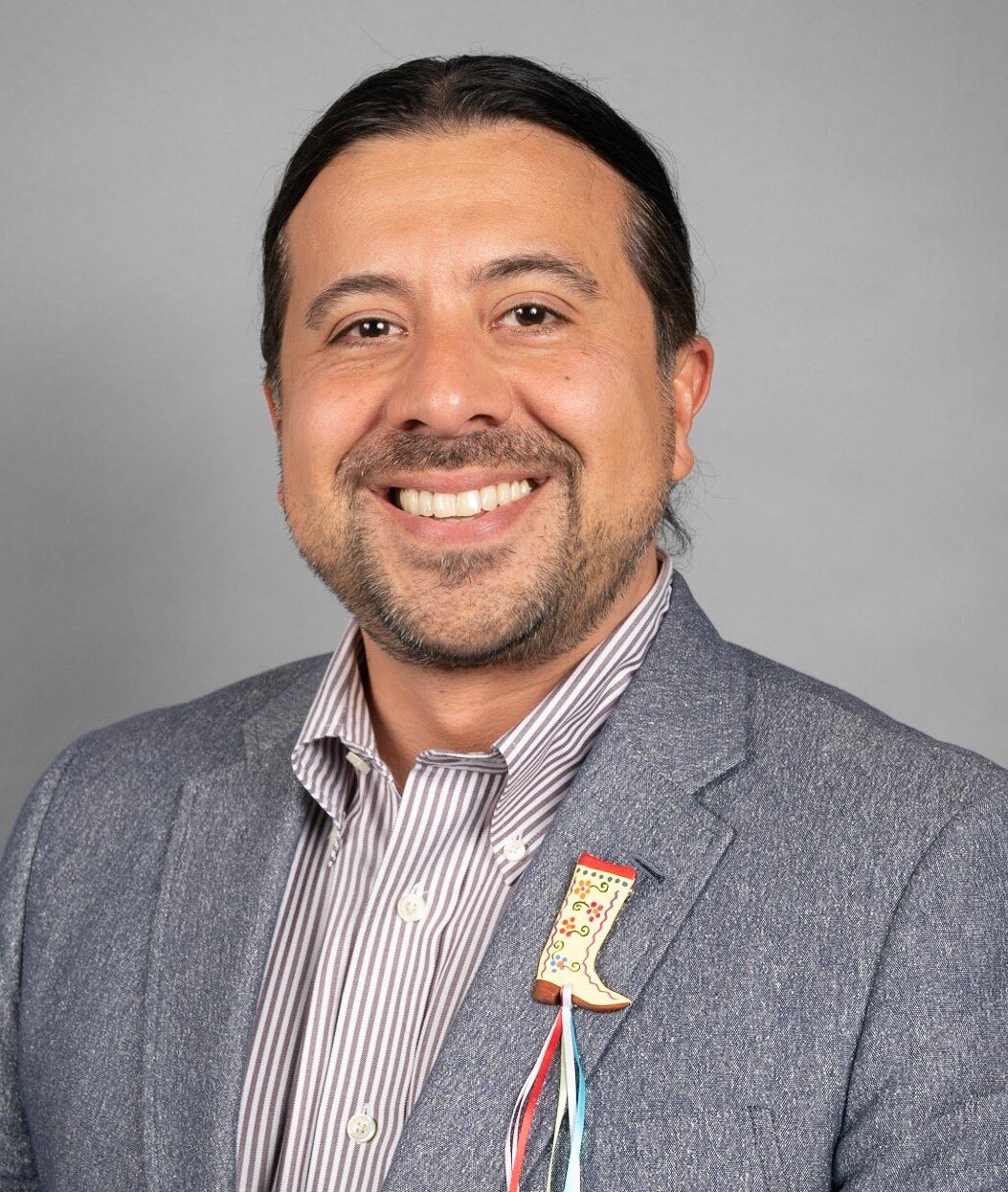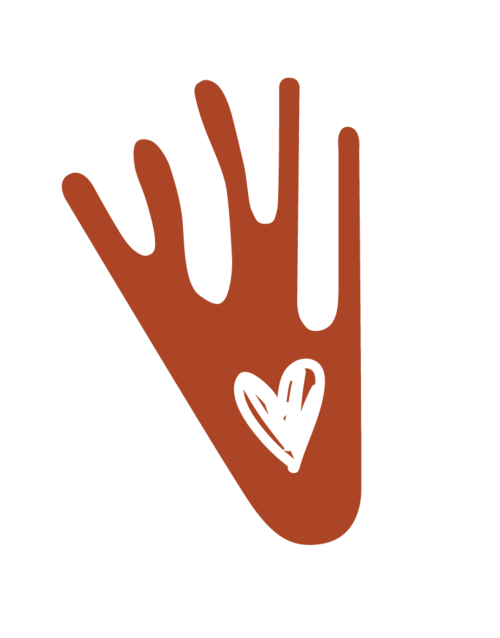Public (Art) Project
By Mark Salinas
Prologue
Lately I have been reflecting upon the social and environmental essentials in transforming public spaces during this health pandemic. Last month I facilitated a public art training workshop to five national artists selected for Smart Growth America’s new initiative Arts & Transportation Rapid Response, a grant opportunity for five eligible cities looking to creatively and quickly address pandemic-related transportation challenges.
It has been exciting to witness thoughtful ideas taking shape that will transform our environment in a creative manner. So much of the art world has lost its foothold with the freefall of budgets, audiences, donors, and staffing during COVID-19. I am grateful for innovative and collaborative programming such as this project, especially when one of the five recipient transportation agencies is the city of Las Vegas. And especially when I learn that the Las Vegas artist paired with this project—and who I will be advising throughout the project from concept to creation—hails from my Midwest alma mater, Washington University in St. Louis, Missouri.
And would you believe that my former classmate Enrique, the guy whose wedding I attended in Vermont during the New York Blackout of 2003, several years after our own graduation, later returned to our alma mater to become an arts instructor? Guess who was his student? Yup, this same Las Vegas artist, Ashley Hairston Doughty. Small pandemic world we live in.
It is with this coincidental backdrop, one of past meeting present, that I worked on this project with a quiet internal hope that our actions of today would result in a safer health environment for tomorrow. Being part of a national team to utilize public art as a public service announcement offered me an opportunity to trace my own inspiration in discovering the relationship between public art and public service.
My first public (art) project in 1993 with Habitat for Humanity. Image courtesy of Mark Salinas.
Nebraska is not a wild beach party college destination. Nonetheless, as a sophomore at Washington University in St. Louis Missouri, looking for fun experience, I had enlisted in Habitat for Humanity’s ‘Alternative Spring break’ in Omaha.
Opposed to my sinful breaks from school, which traditionally started with a drive to the shopping mall for a soft pretzel and a few hours at a bookstore, this year I would be in a minivan filled with collegiate strangers headed to Omaha with the task of helping to build new addition onto a Chicano cultural awareness center. This community center, I read in the brochure, offered classes for youth and adults in Mexican art and music, folkloric dance, and language classes in both English and Spanish. I was an art student at Washington University with a college work-study job at its campus museum installing shows. I had some crate building experience, yet I was anxious to be the least experienced volunteer on the construction site. This is important to note because in my mind we were headed there to build a museum wing and surely there would be forklifts zipping around the worksite with stacks of plywood.
At our rendezvous, about 10 of us exchanged names, loaded our gear, and filed into two minivans. About 15 minutes into our drive I realized I was the only person wearing boots, jeans, a plaid flannel shirt and a backwards ball cap. With information timidly gathered at the next highway rest stop, I discovered between the vehicles, few had experience with a hammer beyond hanging a poster in their dorm room.
Upon our arrival in Omaha, and to our sore-seated surprise there was no addition to be built. Absolutely nothing. No plot of land, no construction site, no roughly framed wooden structure with Jimmy Carter awaiting with open arms. Nothing.
I cannot explain why this was so. I have long forgotten the administrative excuse we were given and I am sure at the time we would not have understood it. Actually, as I write this I am now trying to recall if there was a participation fee of some kind we paid and if we were ever refunded. I cannot remember.
The powers-at-be wanted us to believe we still had a moral purpose in the state of Nebraska and so the minivan brigade was given new work orders for the week, none of which required hardhats. In the mornings we would paint the walls of a designated classroom or office, in the afternoons we would ride home with kids on a bus and practice speaking Spanish, and in the evenings back at the center under the blue glow of the industrial kitchen lights we would eat home-made tamales thoughtfully prepared by the staffers which were rolled, stacked, and wrapped in towering pyramids of aluminum foil.
We slept on the basement floor in our sleeping bags at night. Every morning a different staff member would descend the stairs to awaken us with a pleasant ‘buenas dias!’. Not a bad spring break, really. No one would get a wood splinter in a finger or a roofing nail through a toe, which is a good thing because no one had brought boots.
I recall somewhere in this facility, hanging on a wall we were supposed to paint, was a framed drawing. The artist, a teenager I always imagined, had sketched a brick wall and upon this wall, in graffiti-like font, the following words written with colored markers: I AM A PRODUCT OF MY ENVIRONMENT. The wall was detailed as cracked and deteriorating and while impressively executed, it was truly depressing- especially for an office that supported community affairs. I was really curious about this thing although I never asked about it the entire week. I would lay there in my sleeping bag at night with a belly full of chicken tamales and contemplate what ‘I am a product of’ and what was ‘my environment’ back in suburban St. Louis where I lived with my grandmother while attending an expensive university full-time to study art.
At the time I was enrolled in a semester-long color theory class and I recall the propelling inclination to interpret ‘I AM A PRODUCT OF MY ENVIRONMENT’ in literal terms of science and human physiology. In class, we were learning the human eye’s reaction towards advancing and receding colors, the visual effects of color juxtapositions, and the optical relationships of foreground and background. We were taught, as far as square color swatches and round color wheels are concerned, that yes, our environment defines us in a real sense; our surroundings affect how we look and feel both to oneself and to others.
This all sounded good, but I knew I was over-engineering this statement because of a shortcoming to internally identify the artwork’s deeper meaning. I did not understand its pernicious tone and I was a bit embarrassed by this self-realization. In retrospect, I had not yet developed, as a young adult, a social consciousness of my surroundings beyond my own micro-environment of campus, grandma’s house, and the mall. Any reference to political, social, economic issues was lost on me. The Internet was about two years old; I was 19 years old.
And while the ominous wisdom embedded in that artwork seemed larger than any experience I could possibly transcend, I quietly felt my own presence in the community center at that very moment, painting these walls on my spring break vacation 423 miles from home, was somehow adding meaning in some unknown manner to this artwork’s declaration about environment. By painting this wall, was I patching the cracks in that drawing? This strange nuanced realization—that I might be able to positively affect something that was once thought out of my comprehension, reach, or planning—was a surreal moment.
My APO service pin. Photos/Mark Salinas.
Upon our return to campus, motivated by this shocking and not yet fully understood perspective of connectivity, I joined our university’s chapter of Alpha Phi Omega (APO), a national service fraternity. As opposed to social fraternities that required payment of membership dues, this service fraternity required community service hours for membership. I figured that a bit more volunteering outside my comfort zone may lead to understanding these strange thoughts of redefining ‘me and them’ and ‘here and there.’
Through APO I connected with more communities outside my own, generating new relationships and comforting those needing assistance. Among our more difficult projects, we delivered holidays activities at the Shriners Hospitals for Children, hosted the Special Olympics, and sandbagged for the Great Flood of 1993. We researched and executed these and dozens of other year-round volunteer opportunities using only land-line phones, pens, and clipboards–we were committed! We brought smiles and relief to individuals in personable manners without the on-line social standards of hashtags, selfies, likes, and shares. Of course, I am probably overlooking all the times we showed up late because we got lost and nobody had a quarter to make a phone call.
We often limit our capabilities to flourish within preconceived perimeters. Yet, these small introductory acts of civics, testing our connectivity and responsibility towards pluralism among strangers are the coursework for what I consider public degrees in humanitarianism. Although it took dozens of soft pretzels at the mall to get motivated, I am incredibly grateful to my student self for all the anxious and awkward community contributions that challenged my adult self to develop and continue a path towards public consideration and action.
Still today, I return to thoughts of that drawing; its crumbly wall and all its detailed cracks and shadows. Now as an artist-turned-public art administrator, I think it still offers me an evergreen lesson about the elements of well-being for communities and our shared responsibility of creating and maintaining public spaces of hope, appeal, and pride. While political, social, and economic issues were once lost on me, they are now well-rooted in a soil bed of volunteerism to tend and monitor as an informed adult. In fact, I think these concerns are the motivators for society’s best work.
In 2014 I reconnected with Habitat for Humanity working as their Brush with Kindness Program Manager.
Habitat for Humanity's Brush with Kindness program restored pride and dignity to low-income community spaces.
Epilogue
Ashley’s solo exhibition entitled Kept to Myself at the Marjorie Barrick Museum of Art at the University of Nevada, Las Vegas, was on display throughout the duration of our public art collaboration for the Regional Transportation Commission of Southern Nevada’s Bonneville Transit Center. While only 5 miles away from the museum, the 24/7 transit station couldn’t be a more different world connecting 17 bus routes, serving 1200 departures and arrivals, and employing almost 100 staffers.
Her museum show presented race and gender-based issues through a diary-like reflection of past personal accounts manifested in open, overt, and organized graphic design-based installations. It would be interesting to observe how her meticulous usage of iconography and language, in a controlled clean gallery environment where she is addressing her own past, adapts to a time-sensitive challenge in a chaotic unfamiliar urban environment where she is addressing the future actions of others.
While the pandemic did not allow me to conduct a site visit of the facility with the artist and staff, I did gain a remote understanding of its layout (windows, architecture, lines of sight, ingress, egress, customer habits) and the stakeholders’ interests (weatherization, vandalization, safety, timing, customer profiles) via numerous on-line meetings, videos, and photographs with the artist and transportation agency. Through this fellowship of shared expertise, environmental impact was inevitable.
A task such as this requires the artist to have a public peripheral vision to survey not only the site, but to study the audience, to respond to the stakeholders, and to balance one’s own talent in being a selfless instrument of engagement for public education, awareness, and well-being. Ashley utilized her interest in the vernacular to research and survey bilingual phrases to encourage riders to wear masks and maintain a safe distance from others. This visually stylized language and iconography was backdropped upon dream-like imagery she created from well-known locations on the Las Vegas Strip and nearby natural landscapes. Some of these images reminded me of dreamy moments of self-reflection when the glare of your own bus window captures the reflection of the moving landscape behind you. This service of re-framing of a public space is the exact peaceful and calming interruption needed to reset our understanding that we are a product of our own (safe) environment—go and check it out.
In transforming any communal space, I have determined that education and experience is the two-part epoxy for connecting our inner and outer worlds, the past and the future. In that shared atmosphere of the present, the best public art is public service.
Mark Steel Wool Salinas is a governor-appointed Board Member of the Nevada Arts Council and the former founding Director of the Carson City Department of Arts & Culture. As a public arts administrator, Salinas has founded community-affairs organizations within government, non-profit, and commercial sectors utilizing over 25 years’ experience as a creative contributor to the museum, gallery, fashion, film, and theater industries. Salinas is a 2019 recipient of the Nevada Humanities Rising Star Award and the first Nevadan inducted into the National Association of Latino Arts & Cultures (NALAC) Leadership Institute in San Antonio, Texas.
Thank you for visiting Humanities Heart to Heart, a program of Nevada Humanities. Any views or opinions represented in posts or content on the Humanities Heart to Heart webpage are personal and belong solely to the author or contributor and do not represent those of Nevada Humanities, its staff, or any donor, partner, or affiliated organization, unless explicitly stated. At no time are these posts understood to promote particular political, religious, or ideological points of view; advocate for a particular program or social or political action; or support specific public policies or legislation on behalf of Nevada Humanities, its staff, any donor, partner, or affiliated organization. Omissions, errors, or mistakes are entirely unintentional. Nevada Humanities makes no representations as to the accuracy or completeness of any information on these posts or found by following any link embedded in these posts. Nevada Humanities reserves the right to alter, update, or remove content on the Humanities Heart to Heart webpage at any time.






